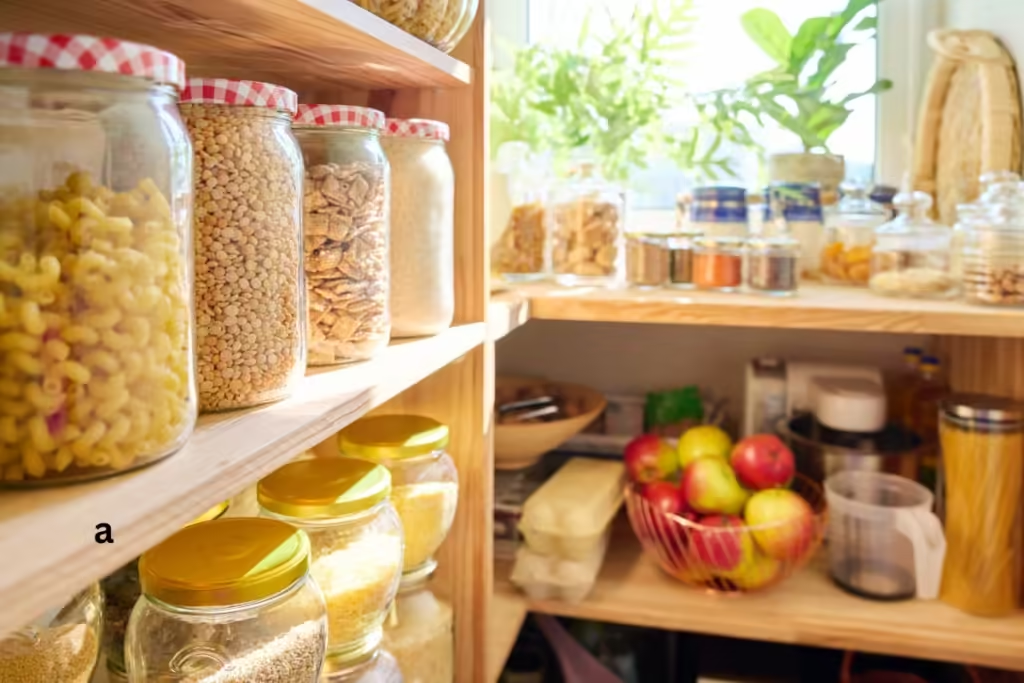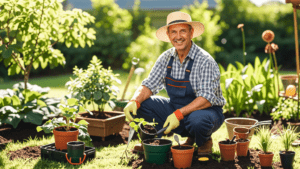
Starting a New Flower Garden: 10 Simple Steps to Create a Stunning Blooming Paradise
Introduction
Starting a new flower garden can be one of the most rewarding and fulfilling experiences for any gardening enthusiast. Whether you’re a seasoned green thumb or just dipping your toes into the world of gardening, planting flowers offers a wonderful opportunity to transform a blank canvas into a vibrant, colorful space that enhances the beauty of your home and brings joy throughout the seasons. Imagine stepping into a garden where every corner is adorned with lush blooms, their colors harmonizing with each other and the natural surroundings. This vision can become a reality with careful planning and a bit of elbow grease.

In this comprehensive guide, we will take you through every step of starting a new flower garden. From selecting the right location and designing your garden layout to choosing the ideal flowers, preparing the soil, and ensuring ongoing maintenance, this article is designed to equip you with the knowledge and confidence needed to create a stunning garden. By following the detailed instructions and tips provided, you’ll be able to cultivate a garden that not only enhances your home’s curb appeal but also offers a peaceful retreat and a source of pride throughout the year.
Choosing the Right Location

Evaluating Sunlight and Shade
One of the first steps in starting a new flower garden is evaluating the amount of sunlight your garden receives. Different flowers have varying light requirements, so understanding the sunlight and shade conditions of your garden will help you select the right plants.
- Full Sun: Areas that receive at least 6-8 hours of direct sunlight each day are considered full sun. Flowers like roses, sunflowers, and zinnias thrive in these conditions. Full sun gardens tend to be warm and bright, making them ideal for plants that need lots of light to bloom.
- Partial Shade: Gardens that receive 3-6 hours of sunlight per day or filtered sunlight are classified as partial shade. Flowers such as impatiens, begonias, and hostas do well in these conditions. These areas often have dappled light or shade from trees and structures.
- Full Shade: If your garden area receives less than 3 hours of direct sunlight each day, it’s considered full shade. Flowers like astilbes, ferns, and hellebores are perfect for these low-light conditions. Full shade gardens can be cool and moist, providing a unique environment for shade-loving plants.
Assessing Drainage and Soil Type
Drainage and soil type are critical factors in starting a new flower garden. Proper drainage prevents waterlogging and root rot, while the soil type affects nutrient availability and plant health.
- Drainage: To assess drainage, observe how quickly water absorbs into the soil after rainfall. Well-drained soil allows water to move through the soil without pooling. If your soil is heavy clay or tends to stay soggy, you may need to improve drainage by incorporating organic matter or creating raised beds.
- Soil Type: The type of soil in your garden affects how well plants grow. Loamy soil, which is a mix of sand, silt, and clay, is ideal for most flowers. It holds moisture and nutrients while providing good drainage. If your soil is too sandy or clayey, amend it with compost or other organic matter to improve its structure and fertility.
Related:
September flower planting: 7 Best Flowers to Plant in September for a Stunning Fall Garden
Planning Your Garden Layout

Designing for Aesthetics
When starting a new flower garden, designing for aesthetics is key to creating a visually appealing space. Consider the following design principles:
- Color Scheme: Choose a color scheme that complements your home and surroundings. You might opt for a harmonious color scheme with shades of a single color or a contrasting scheme with bold, vibrant hues. For example, pairing blue delphiniums with yellow marigolds can create a striking visual effect.
- Height and Texture: Incorporate flowers of varying heights and textures to add depth and interest to your garden. Place taller plants like sunflowers or lilies at the back of garden beds and shorter plants like pansies or calibrachoa at the front. Mixing different textures, such as the soft petals of petunias with the spiky leaves of salvias, enhances the overall garden design.
- Seasonal Interest: Plan your garden to offer interest throughout the seasons. Include a mix of annuals, which bloom continuously throughout the growing season, and perennials, which return year after year. For example, peonies and tulips provide early spring blooms, while chrysanthemums and ornamental grasses offer late-season color and texture.
Considering Plant Size and Growth Habits
Understanding the size and growth habits of plants is essential when starting a new flower garden. Proper spacing ensures that plants have room to grow and do not compete for resources.
- Spacing: Follow the recommended spacing guidelines for each plant type to prevent overcrowding. For example, zinnias should be spaced about 12-18 inches apart, while snapdragons may need 6-8 inches between plants. Proper spacing allows for adequate air circulation, reducing the risk of disease and promoting healthy growth.
- Growth Habits: Consider how plants spread and their growth habits when planning your layout. Some plants, like lavender, have a compact, upright growth habit, while others, like sweet alyssum, spread and cascade. Plan your garden layout to accommodate these growth habits and create a balanced, cohesive design.
Selecting the Ideal Flowers

Understanding Hardiness Zones
Selecting flowers that are suited to your hardiness zone is crucial for successful gardening. Hardiness zones indicate the temperature range in which plants can thrive.
- Hardiness Zones: Check your region’s hardiness zone to choose flowers that will perform well in your climate. For example, daylilies are hardy in a wide range of zones, while calla lilies are better suited to warmer climates. Understanding your hardiness zone helps ensure that your plants can withstand local weather conditions and continue to thrive throughout the growing season.
Picking Seasonal Blooms
Incorporate a mix of seasonal blooms to keep your garden colorful throughout the year. Consider plants that offer continuous blooms or multiple flowering periods.
- Spring Blooms: Choose early bloomers like tulips, daffodils, and hyacinths for spring color. These flowers bring life to your garden after winter and can be paired with early-blooming perennials like bleeding hearts.
- Summer Blooms: Opt for summer favorites like coneflowers, sunflowers, and marigolds to maintain vibrant color as the weather warms. These plants thrive in sunny conditions and add a cheerful touch to your garden.
- Fall Blooms: Incorporate fall-blooming flowers like chrysanthemums, asters, and sedum to extend the garden’s beauty into autumn. These plants provide rich, warm colors and help your garden transition gracefully into cooler weather.
Incorporating Perennials and Annuals
A well-rounded garden includes both perennials and annuals for a mix of longevity and seasonal interest.
- Perennials: Perennials, such as hostas, peonies, and shasta daisies, return year after year and provide lasting beauty. They typically have a longer lifespan and require less replanting, making them a valuable addition to any garden.
- Annuals: Annuals, like petunias, impatiens, and marigolds, provide a burst of color that lasts throughout the growing season. They are often used to fill in gaps and add seasonal variety to your garden.
Preparing the Soil

Testing and Amending Soil pH
Before starting a new flower garden, it’s essential to test and amend your soil’s pH. Soil pH affects nutrient availability and plant health.
- Testing Soil pH: Use a soil testing kit to determine your soil’s pH level. Most flowers prefer a slightly acidic to neutral pH (6.0 to 7.0). Testing your soil helps identify any adjustments needed to create an optimal growing environment.
- Amending Soil pH: If your soil’s pH is outside the ideal range, amend it with lime to raise pH or sulfur to lower pH. Follow recommended application rates to adjust soil pH and ensure that your flowers have access to the nutrients they need.
Incorporating Organic Matter
Adding organic matter to your soil improves its structure and fertility. Organic matter helps retain moisture, enhances nutrient content, and promotes healthy root development.
- Compost: Incorporate well-rotted compost or manure into your garden soil to enrich it with essential nutrients. Compost also improves soil texture and supports beneficial microorganisms that aid plant growth.
- Mulch: Apply mulch around plants to retain moisture, suppress weeds, and regulate soil temperature. Organic mulches, such as shredded leaves or straw, decompose over time, adding nutrients to the soil.
Planting Techniques

Proper Planting Depth and Spacing
Adhering to proper planting depth and spacing is crucial for successful starting a new flower garden. Correct planting ensures that plants have enough space to grow and develop strong roots.
- Planting Depth: Plant flowers at the depth recommended for each species. Generally, plant bulbs and seedlings at a depth about twice their height. For example, plant tulip bulbs about 6-8 inches deep.
- Spacing: Follow spacing guidelines to prevent overcrowding. Space plants according to their mature size to allow for adequate air circulation and growth. For instance, space sunflowers 12-18 inches apart to accommodate their large size.
Watering Essentials for New Plantings
Proper watering is essential for starting a new flower garden and ensuring healthy plant growth.
- Initial Watering: Water newly planted flowers thoroughly to help them establish their roots. Ensure that the soil is evenly moist but not waterlogged. Avoid overhead watering, which can lead to fungal diseases.
- Ongoing Watering: Maintain consistent moisture throughout the growing season. Water plants deeply and less frequently to encourage deep root growth. Adjust your watering schedule based on weather conditions and soil moisture levels.
Maintenance and Care

Regular Pruning and Deadheading
Ongoing maintenance and care are vital for keeping your flower garden in top shape.
- Pruning: Regularly prune plants to remove dead or damaged stems and encourage new growth. Pruning also helps maintain the shape and size of plants, preventing them from becoming overgrown.
- Deadheading: Remove spent blooms from flowers like roses and marigolds to promote continuous flowering. Deadheading prevents the formation of seed heads and encourages plants to produce more blooms.
Fertilization Schedules
Establish a fertilization schedule to provide your flowers with the nutrients they need to thrive.
- Types of Fertilizer: Use balanced fertilizers that provide equal amounts of nitrogen, phosphorus, and potassium. For flowering plants, a higher phosphorus content supports bloom development.
- Application: Follow the manufacturer’s instructions for fertilizer application rates and timing. Over-fertilizing can lead to excessive foliage growth at the expense of blooms.
Pest and Disease Management
Monitor your garden for pests and diseases that can affect plant health.
- Pest Control: Common garden pests include aphids, slugs, and spider mites. Use organic pest control methods, such as neem oil or insecticidal soap, to manage infestations without harming beneficial insects.
- Disease Prevention: Prevent fungal diseases by ensuring good air circulation and avoiding overhead watering. Remove and dispose of infected plant material to prevent the spread of disease.
Conclusion
Starting a new flower garden is an exciting and fulfilling endeavor that allows you to create a beautiful, vibrant outdoor space. By carefully selecting the right location, planning your garden layout, choosing ideal flowers, preparing the soil, and maintaining your garden with regular care, you can enjoy a flourishing garden that enhances the beauty of your home and brings joy throughout the seasons. Embrace the process of starting a new flower garden with enthusiasm and creativity, and you’ll be rewarded with a stunning garden that continues to bloom year after year.
FAQs
1. What is the best time to start a new flower garden?
The best time to start a new flower garden depends on your local climate. Generally, spring or early fall is ideal as it provides favorable conditions for planting and allows flowers to establish before extreme weather conditions. In cooler climates, early spring is recommended, while in warmer regions, early fall can be perfect for planting.
2. How do I choose the right location for my flower garden?
When choosing a location for your flower garden, consider factors such as sunlight exposure, soil type, and drainage. Most flowers need at least 6 hours of direct sunlight per day, so pick a spot with ample sunlight. Ensure the soil is well-drained and amend it with compost or organic matter to improve fertility.
3. What flowers are best for beginners?
For beginners, it’s best to start with hardy, low-maintenance flowers. Some excellent choices include marigolds, zinnias, petunias, and sunflowers. These flowers are relatively easy to grow and provide vibrant blooms throughout the growing season.
4. How do I prepare the soil for planting flowers?
Preparing the soil involves testing its pH, adding organic matter like compost, and ensuring proper drainage. Start by testing the soil pH and adjusting it if necessary. Work in compost or well-rotted manure to enrich the soil and improve its structure. Ensure good drainage by avoiding areas where water tends to pool.
5. How often should I water my new flower garden?
Newly planted flowers should be watered thoroughly to help them establish. After planting, water deeply and regularly to keep the soil consistently moist, but not waterlogged. Once the plants are established, reduce watering frequency and adjust based on weather conditions and soil moisture levels.
6. How can I manage pests and diseases in my flower garden?
To manage pests and diseases, regularly inspect your plants for signs of trouble. Use organic pest control methods, such as neem oil or insecticidal soap, and practice good garden hygiene by removing diseased plant material. Prevent fungal diseases by ensuring proper air circulation and avoiding overhead watering.
7. When should I fertilize my flower garden?
Fertilize your flower garden according to the needs of your plants. Generally, a balanced fertilizer can be applied in early spring to support new growth. Follow the manufacturer’s instructions for application rates and timing. Avoid over-fertilizing, as this can lead to excessive foliage growth and reduced flowering.
8. What should I do for winter care of my flower garden?
For winter care, prepare your garden by removing dead plant material and applying a layer of mulch to protect the soil and plant roots from harsh winter conditions. In colder climates, consider covering sensitive plants with burlap or protective wraps. Ensure that perennials are well-mulched to survive the winter months.
9. How do I encourage continuous blooming in my flower garden?
To encourage continuous blooming, practice deadheading by removing spent flowers regularly. This helps prevent the plant from going to seed and promotes the production of new blooms. Additionally, choose varieties with staggered blooming periods to ensure a consistent display of flowers throughout the growing season.
10. Can I start a flower garden in containers?
Yes, starting a flower garden in containers is a great option if you have limited space or want to create a portable garden. Choose containers with good drainage and use high-quality potting mix. Select flowers that are suitable for container gardening, such as petunias, geraniums, and pansies, and ensure they receive adequate sunlight and water.
References:
- “The Ultimate Guide to Flower Gardening” – Better Homes & Gardens
- “Flower Gardening 101: How to Grow a Flower Garden” – The Spruce
- “How to Start a Flower Garden: Tips for Beginners” – Gardener’s Supply Company
- “10 Tips for Starting a Flower Garden” – House Beautiful
- “The Best Flowers to Plant in Your Garden” – Country Living
- “Preparing Your Garden Soil for Flowers” – The Old Farmer’s Almanac
- “Choosing the Right Location for Your Flower Garden” – Fine Gardening
- “Flower Garden Care: Tips for Pruning, Fertilizing, and More” – Almanac.com
- “Container Gardening: Tips for Growing Flowers in Pots” – Garden Design
- “Winter Care for Your Flower Garden” – Horticulture Magazine




